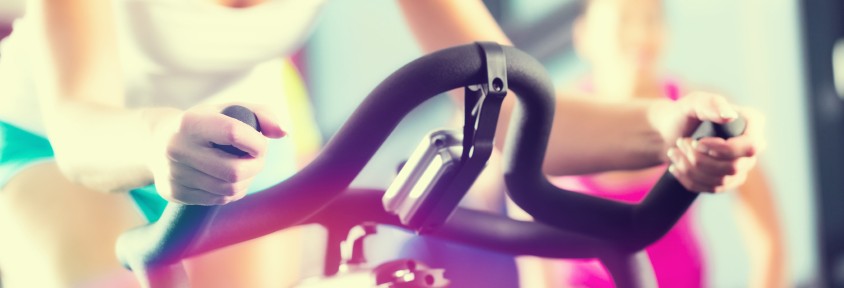
Stationary bikes are ideal cardiovascular tools to improve heart and lung function, burn calories, rehab knees, and reduce stress. Most people know how to pedal a bike and cycling offers an intense, low-impact exercise that is safe for the majority of fitness participants. Using a stationary bike does not offer many workout options, though. Unlike a treadmill on which you can walk, run, walk uphill, walk on tip-toes, or jog, a stationary bike is limited, whether an upright or recumbent. Yes, you can pedal faster and increase or decrease the resistance to simulate hills, but the motion is the same. Fitness professionals will tell you that you need workout variety to keep challenging your body to respond and to reduce injuries. If the stationary bike is your go-to piece of equipment, vary your workout with backward pedaling.
Backward Cycling
 Backward
Backward
Many stationary bikes, whether they are upright or recumbent, can be pedaled backward. The same is not true for indoor cycling bikes which operate on a flywheel system. These bikes may not have the ability to go backward, or it may be harmful to you or the bike, so check with gym staff before you try the workout on an indoor cycling bike. Otherwise, add in a backward cycling time to your workouts to improve your cycling skills, burn calories and enhance your heart-health.
Benefits
The American Council on Exercise, ACE, studied backward cycling in comparison to forward cycling. ACE found no differences in responses between females and males, but the differences between backward and forward cycling were identified. When subjects pedaled backward, their heart rate was higher by approximately eight beats per minute. Subjects also felt as if they were working harder, but the workload and pace was the same as when they pedaled forward. For the muscles, the groups in the fronts and backs of the lowers legs, the backs of the upper legs and buttocks, recorded the same amount of energy usage. The muscles on the fronts of the upper legs, the quadriceps, showed a higher involvement during backward cycling. Researchers said that the higher quadriceps usage was expected since subjects had to pull up on the pedals when cycling backward.
A higher heart rate response during backward cycling helps to improve aerobic capacity. When you add backward cycling into your workout, you are strengthening your heart for forward cycling. This means that when you pedal forward, your heart is more efficient and you will be able to pedal faster, longer or at a higher intensity level. The same is true because of the increase in quadriceps strength. Your forward cycling benefits because each push on the pedal will be stronger and more efficient.
Workout Example
You can perform sustained bouts of forward and backward cycling such as 15 minutes forward followed by 15 minutes backward for your 30-minute workout sessions, or mix it up and alternate every one to two minutes. As the strength and power of your legs increases, you will be able to pedal backward, and forward for longer durations, so increase the resistance level to keep challenging your body. Soon, the workout will not feel as difficult and you will see the body-changing benefits.
